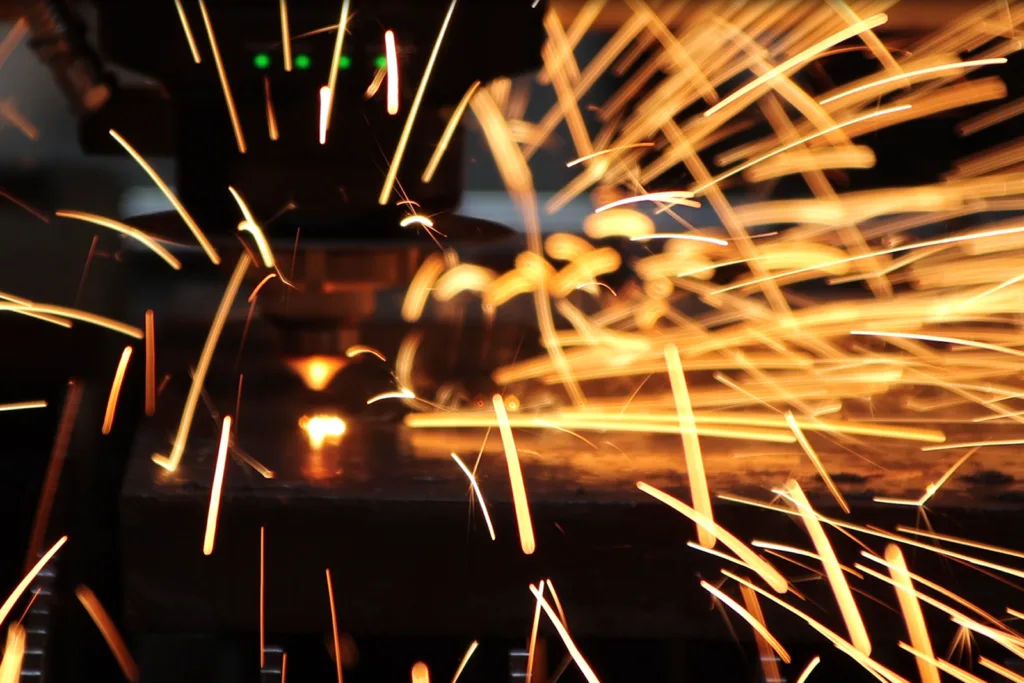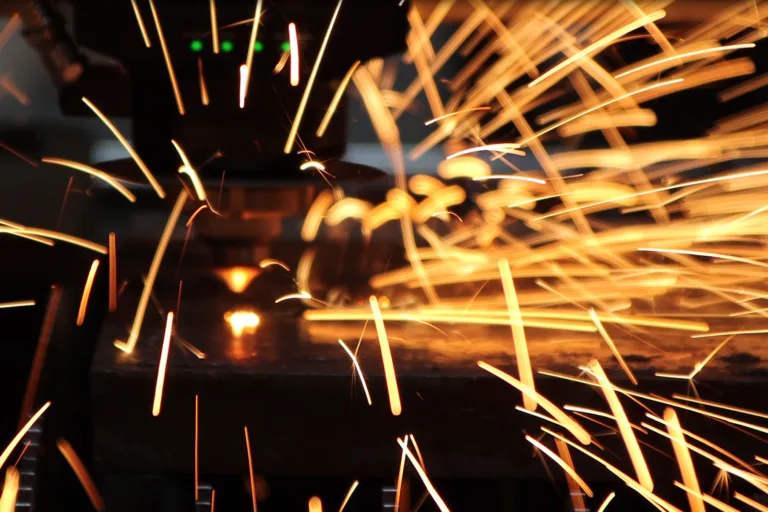2025 How To Choose A Suitable Laser Power for Your Fiber Laser Cutting Machine
Fiber laser cutting machines have revolutionized the manufacturing and metalworking industries with their precision, speed, and versatility. However, one of the most critical factors determining the efficiency and quality of the cutting process is the laser power. Choosing the right laser power for your fiber laser cutting machine is essential to achieving optimal results, minimizing operational costs, and extending the lifespan of the equipment. In this article, we will explore the key considerations for selecting the appropriate laser power for your specific needs.
Understand Your Material Type and Thickness Match Which Laser Power
The type and thickness of the material you intend to cut are the primary factors in determining the required laser power. Fiber laser cutting machines are commonly used for cutting metals such as stainless steel, carbon steel, aluminum, brass, and copper. Each material has different properties, such as reflectivity and thermal conductivity, which affect how it interacts with the laser. Aluminium, brass, and copper are both highly reactive materials and require anti-highly reactive laser sources.
– Thin Materials (0.5mm to 6mm ss and 0.5mm to 16 mm cs ): For thin sheets of metal, lower laser power (1000W-2000W) is usually sufficient. High power is unnecessary and may lead to excessive heat, causing warping or burning.
– Medium Thickness Materials (18mm to 22mm cs and 8mm to 18mm cs): A medium power range (3000W to 6000W) is ideal for cutting materials in this range. It provides a good balance between speed and precision.
– Thick Materials (25mm and above): For thicker materials, higher laser power (10000W and above) is required to ensure clean cuts and maintain productivity.
You can choose the right laser power according to the chart below, or you can click on our online chat to interact with us, we will provide you with professional answers.

High laser power enables faster cutting speeds and cleaner cuts, particularly when working with thick materials, such as steel or aluminum. Conversely, insufficient laser power may lead to slower cutting speeds, increased kerf width, and even compromised cut quality. Therefore, understanding how laser power interacts with the material being cut is crucial for optimizing production processes. For example, softer materials like plastic and wood require less laser power for effective cutting compared to denser materials, which necessitate higher power settings to achieve desired results.
Furthermore, the relationship between laser power and beam quality must also be considered. A high-power laser with poor beam quality may produce undesirable cutting results, while a lower-powered laser with excellent beam quality can achieve superior outcomes in certain applications. As a consequence, selecting appropriate laser power is a balance between achieving the necessary cutting efficiency and maintaining high-quality outputs.
Lastly, operators should take into account that excessive laser power can lead to detrimental effects, such as thermal distortion, excessive dross formation, and even damage to sensitive materials. This highlights the significance of correctly matching laser power settings with the specific requirements of the task at hand. By understanding these critical elements of laser power, manufacturers can make informed decisions to enhance their production efficiency and ensure the quality of their cut materials.
Factors to Consider When Determining Laser Power Needs

When selecting the appropriate laser power for a fiber laser cutting machine, several critical factors must be taken into account to ensure optimal cutting performance. The first and foremost consideration is the type of material being cut. Different materials, such as metals and plastics, respond uniquely to laser cutting processes, which means they require varying power settings. For instance, cutting through thicker metal sheets often necessitates higher laser power compared to cutting materials like acrylic or wood.
The thickness of the material is another vital element to consider. Generally, the thicker the material, the more power is required to achieve a clean cut. Manufacturers typically provide guidelines regarding the recommended power levels for various material thicknesses, which serve as a useful reference point. It is also important to take into account the cutting speed desired. Higher speeds may require more power to maintain efficiency, particularly for thicker materials. Conversely, lower cutting speeds can compromise precision if there is limited power available.
Precision is a critical aspect of laser cutting, particularly in applications requiring fine details. The laser power needs to align with the desired level of accuracy; insufficient power may lead to rough edges or incomplete cuts. Moreover, operational requirements play a crucial role in determining the necessary laser power. Consideration of production volume is essential, as high-volume operations may benefit from machines equipped with additional power to improve throughput without sacrificing quality. Thus, it is crucial to assess not only the immediate cutting tasks but also the broader operational context to make informed decisions regarding the laser power selection.
Common Laser Power Ratings and Their Applications

Fiber laser cutting machines come equipped with various power ratings that cater to a range of industrial applications. The most commonly available ratings include 1000W, 1500W, 3000W, and higher. Each of these power outputs is optimized for specific types of materials and thicknesses, making it crucial to select the appropriate power rating to achieve desired cutting results.
The 1000W laser power is typically well-suited for cutting thinner materials, usually under 6 mm. This rating is ideal for applications such as the fabrication of intricate designs in stainless steel and aluminum, as well as for various non-metal materials including plastics and wood. Smaller-scale operations or hobbyist projects often utilize this power rating, as it provides sufficient strength for precision work without excessive energy consumption.
Moving up to the 1500W option, this power level allows for efficient cutting of materials ranging from 1 mm to 12 mm. This makes the 1500W laser a versatile option for a broader range of applications, including decorative cuts and sign making where both efficiency and detail are required. Industries such as automotive and electronics also find this power rating effective for sheet metal processing and component manufacturing.
For more robust demands, the 3000W laser power rating stands as a significant capability. Machines equipped with this level of power can effortlessly handle materials from 3 mm to 20 mm in thickness. This makes it invaluable in heavy industries like shipbuilding and construction, where thicker metals such as steel and titanium are commonly utilized. Higher wattage lasers are also favored in applications that require faster cutting speeds without sacrificing quality.
Choosing the right fiber laser power rating is essential for optimizing performance across various materials and projects. Understanding these common laser power ratings and their corresponding applications can greatly influence operational efficiency and product quality in cutting processes.
Making the Right Choice: Tips for Selecting the Ideal Laser Power

Choosing the correct laser power for your fiber laser cutting machine is crucial to ensuring optimal performance and efficiency. It requires an understanding of various factors that can influence your production needs. To begin with, it is advisable to consult with machine manufacturers or suppliers who possess in-depth knowledge of their products. They can provide insights into the specific capabilities of different laser power levels and help you identify which one aligns best with your operational requirements.
Additionally, it is essential to evaluate your potential production demands. Consider the materials you’ll be cutting, the thickness of the workpieces, and the desired cut quality. For example, if your projects involve cutting thicker materials or intricate designs, a higher laser power may be necessary. Conversely, if your work primarily revolves around thinner materials, a lower power rating might suffice. A better understanding of your current and anticipated workloads will guide you toward the most suitable laser power for your fiber laser cutting machine.
Future scalability is another critical aspect to ponder. As your business evolves, you might face increasing demands that require more robust cutting capabilities. Hence, selecting a fiber laser cutting machine with adaptable laser power can provide the flexibility you need to meet future challenges. It’s wise to consider machines that accommodate upgrades or have multiple power settings.
Lastly, be aware of common pitfalls during the selection process. One common mistake is underestimating the importance of a well-balanced power-to-speed ratio. Selecting an inadequate laser power can lead to subpar quality and inefficient production, ultimately affecting profitability. Taking the time to ponder these factors will enable you to make an informed decision, ensuring your investment in a fiber laser cutting machine yields the best possible results.

